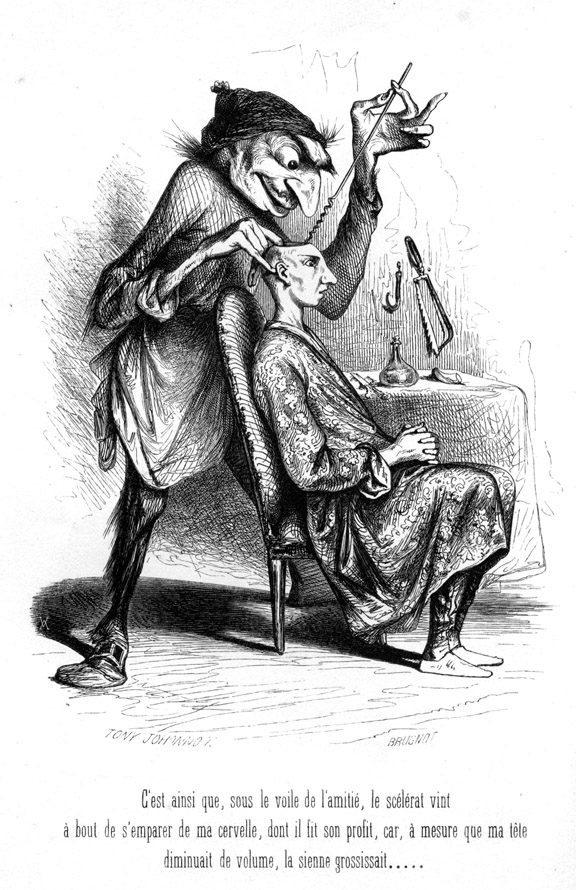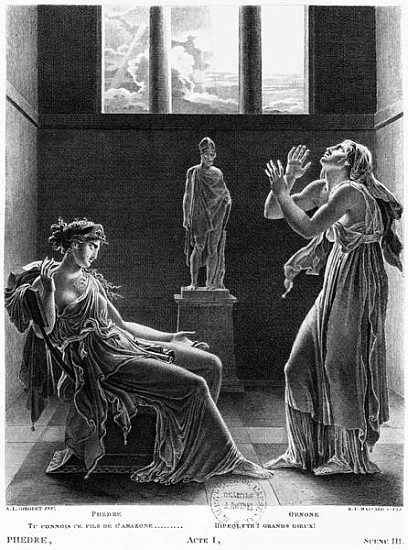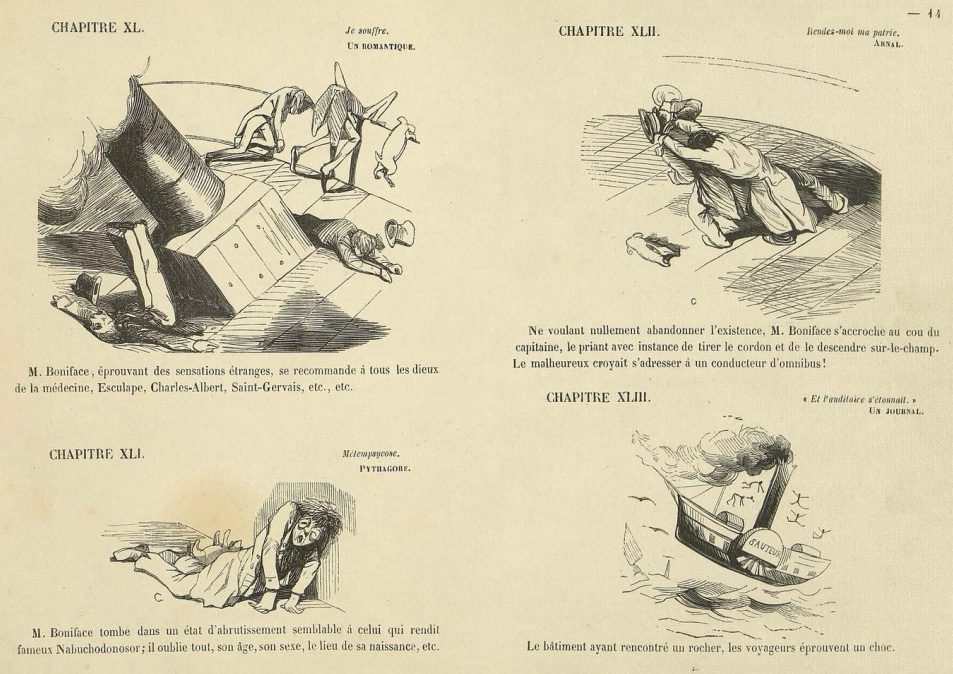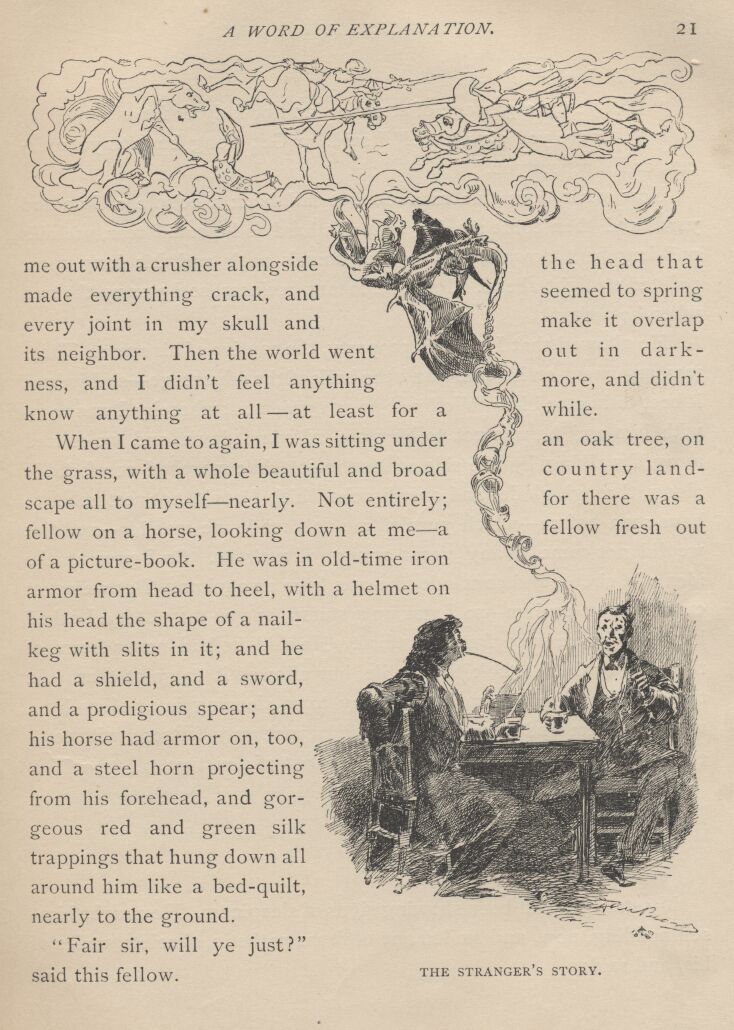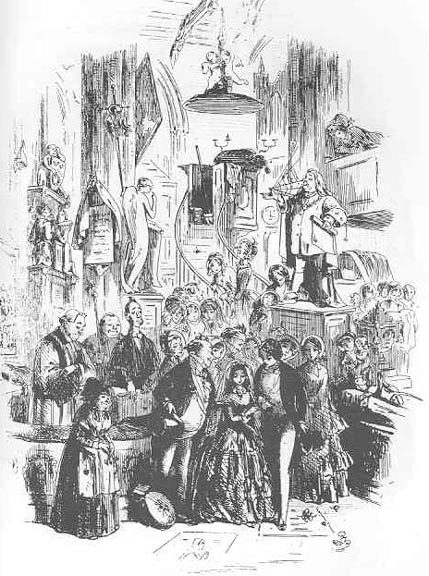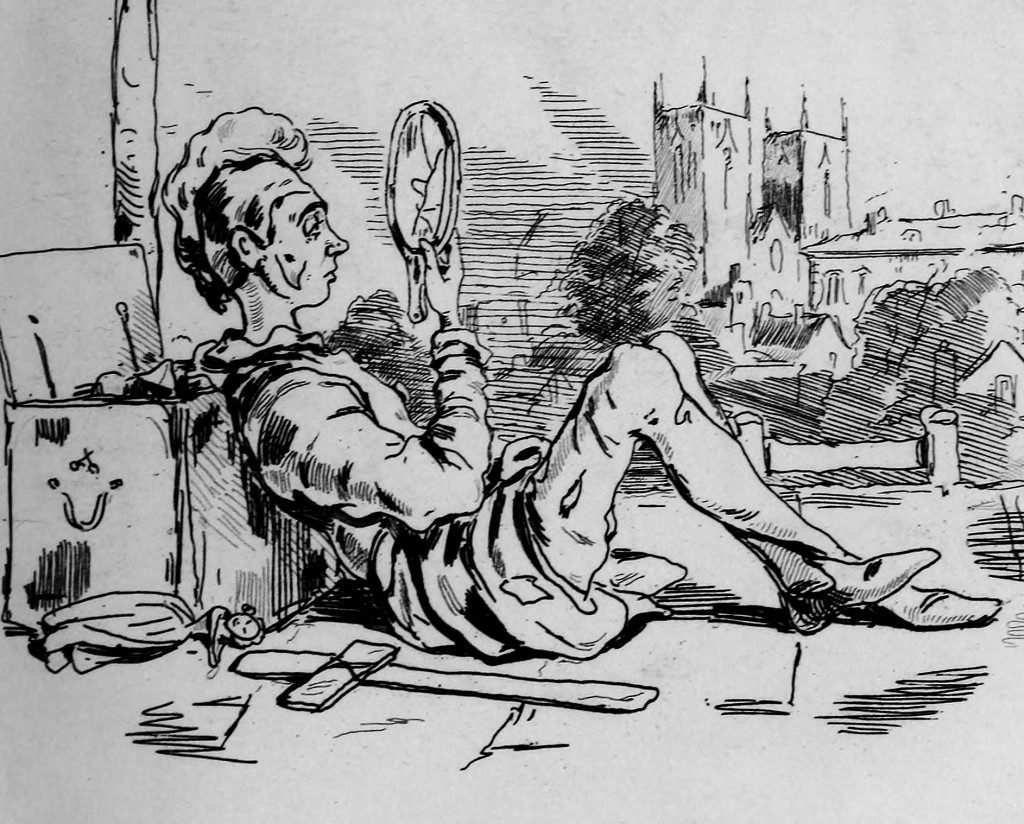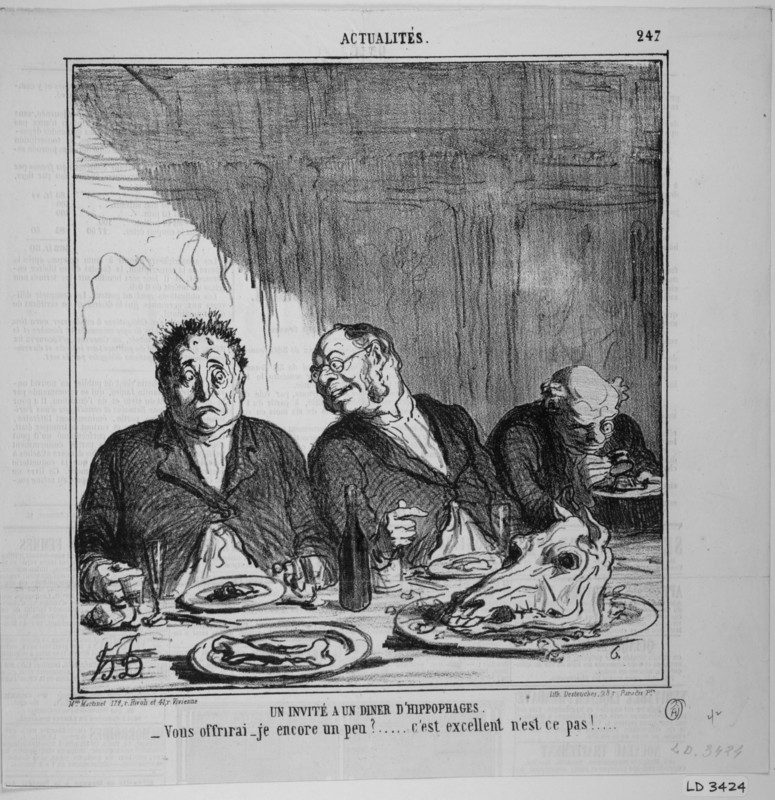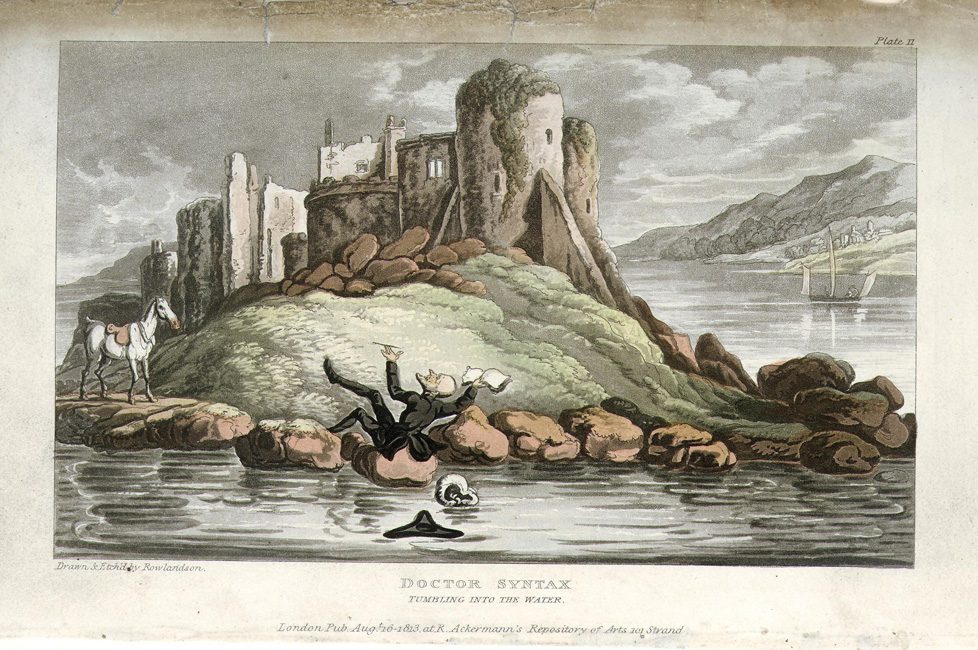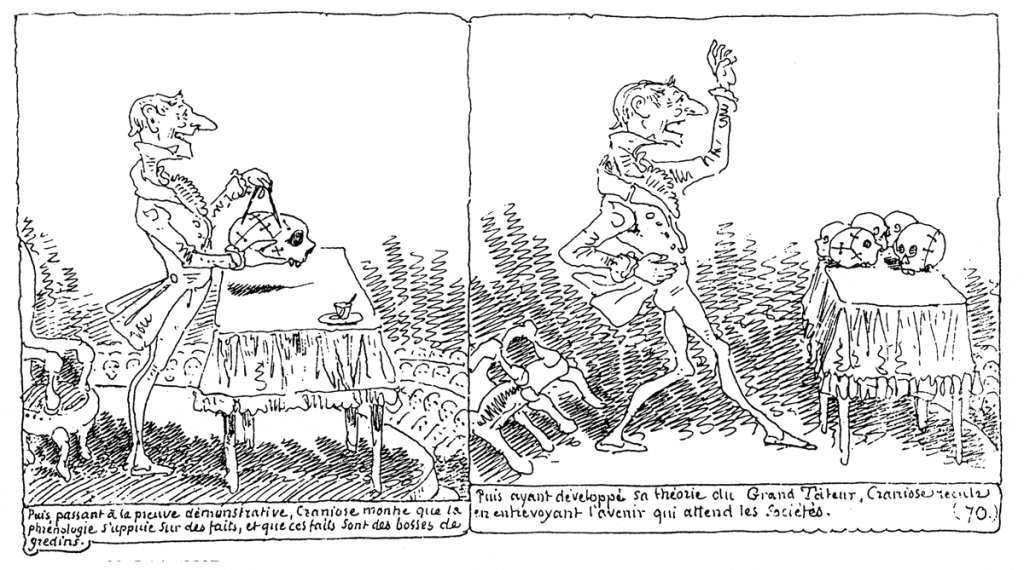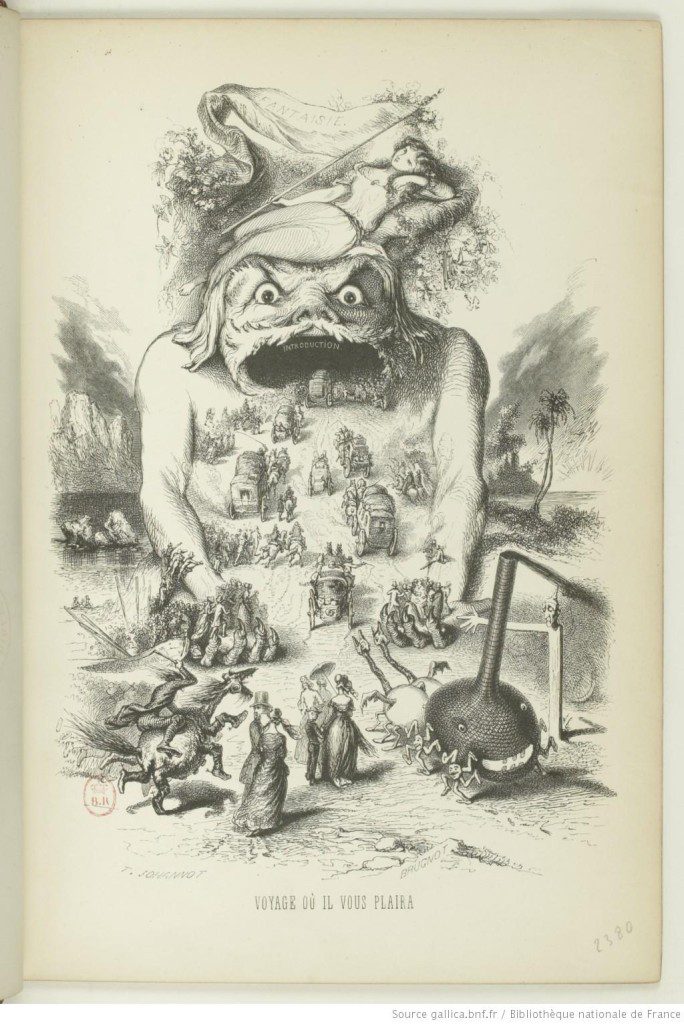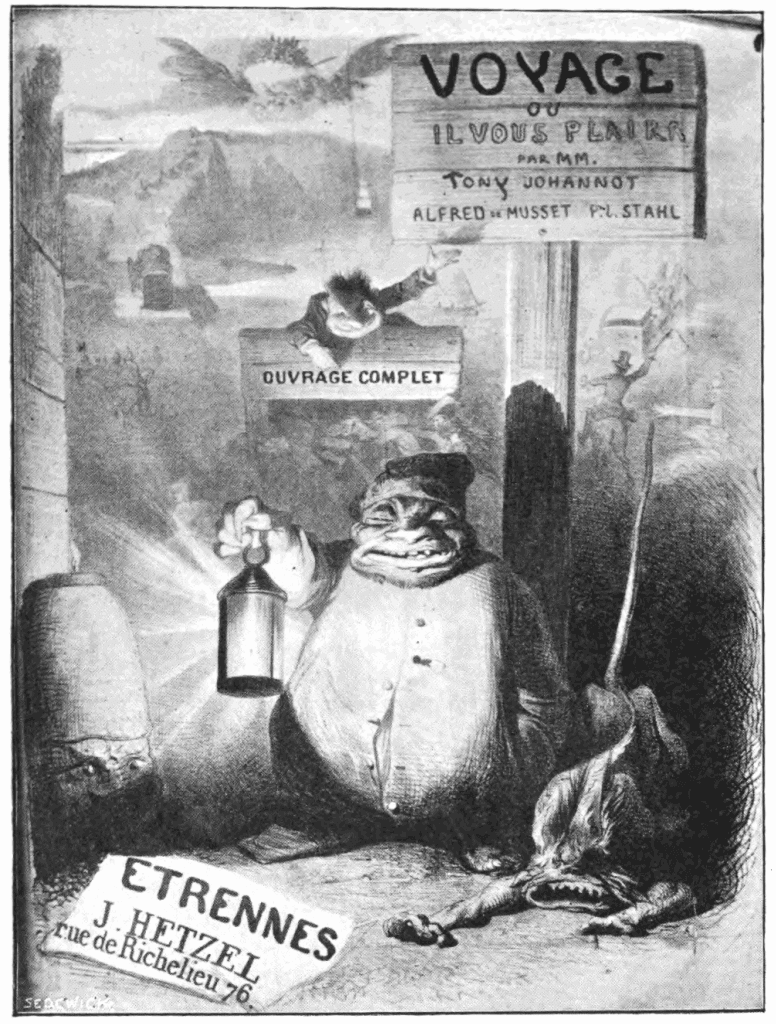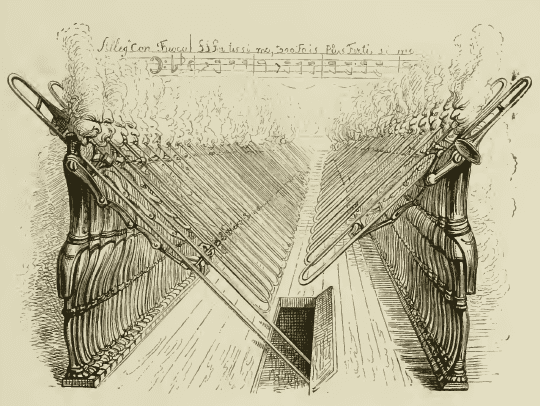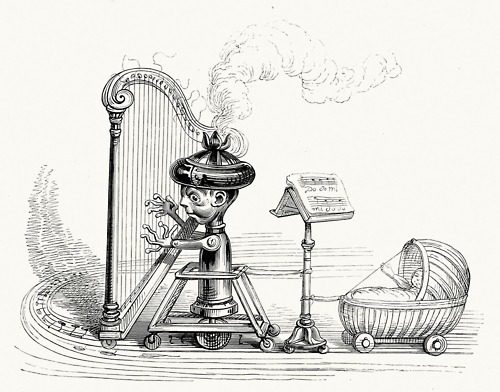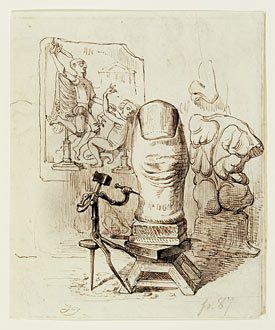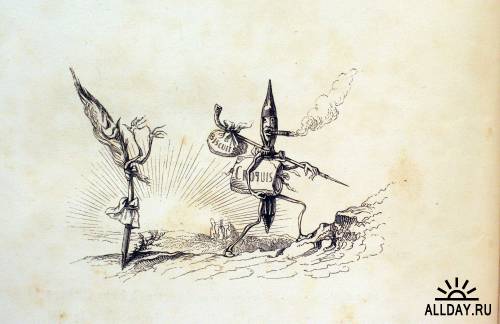The New York Comics & Picture-Story Symposium is a weekly forum for discussing the tradition and future of text/image work. Open to the public, it meets Tuesday nights from 7-9 p.m. EST in New York City. Presentations vary weekly and include everything from historical topics and technical demonstrations to creators presenting their work. Check out upcoming meetings here.
This week, art historian Patricia Mainardi explored the delights and history of picture-stories (or stories-with-pictures). More specifically, she examined the peak period of illustrated novels in 19th century Europe. Mainardi is a professor emerita in the doctoral program in art history at the City University of New York and specializes in 18th and 19th century European art. She is working on a book about this subject, called Another World: Illustrated Print Culture in 19th-century France.
The 19th century was a golden time for illustration. More illustrated books, magazines, and newspapers were produced than in all previous centuries combined. Prior to the 1830s, illustrated novels were an established part of the cultural scene, but in the 1830s and 40s, something happened to illustration that completely transformed its potential.
Before, images and text had to be printed with different techniques. One could print some text underneath an image, but this would require a separate pass that took more time and resources. Images and text were thus confined to separate pages and the number of pages of text in a book outnumbered the number of illustrations. Illustrations acted as isolated set pieces within a book rather than as a sequential narrative. Additionally, there was a set hierarchy and method for how artists worked with text. For the most part, artists did not write their own texts, and people considered illustration secondary to the text.
Suddenly, though, two new printing techniques (wood engraving and lithography) completely changed the picture. Wood engraving allowed words and images to be more easily printed on the same page. Lithography let printers create images more cheaply and quickly. Books went from having twenty-nine illustrations to boasting two hundred, an attractive new selling point for publishers. Artists who were hitherto used to depicting several key moments in a narrative (similar to history painting) were suddenly challenged to depict a story in hundreds of images. Mainardi quoted an artist describing how confused he was by this challenge. However, after producing around 600 images for a book, he went from being skeptical that there would be enough material to feeling like he could have surpassed 600. Boosting the number of images made illustrators start telling the story through sequential pictures. Mainardi highlighted the formal visual inventions that started to appear, like Gustave Doré and Cham’s speed lines and experimental point-of-view.
Not only did illustrated vignettes share a page with a body of text, they compositionally interacted with it, sometimes to the extent that a page began to resemble a sort of graphic novel. Illustrators started playing with “pictorial metaphors,” and the reader’s experience. For example, when the reader read the comparison of a character to an animal, s/he then saw an image of that animal. Likewise, the reader could read the description of a setting and see it simultaneously, “at the same time as the [narrator] does.” “We don’t just read the text,” Mainardi explained, “we reenact it.” Illustrators could also vary the different styles they used within one book.
(This talk focused on French artists and did not include the American book above, but it is a good example of the described effect).
Many writers and literary critics hated the new illustration craze. To the audience’s amusement, Mainardi read from a critic’s remarkably grumpy diatribe against the “literary decadence . . . bastardization . . . miscegenation” of this hybrid form. Flaubert and Henry James were not fans. Mainardi pointed out that several authors, like Charles Dickens and Honoré de Balzac, welcomed illustration and would choose their own artists and go to great pains to art direct their books. Strikingly, but unusually, William Makepeace Thackeray illustrated his own novels.
The new printing technology also opened up possibilities for changing the artist/writer dynamic. It was more conventional for artists to illustrate others’ texts. For example, Mainardi explained how Honoré Daumier’s editor would variously provide and edit the captions for his images. His editor would write titles for a series, Daumier would go out and make images, and then the editor would reconcile the captions with the images. These illustrations would be available as single prints (either as more affordable black-and-white prints or as nicer hand-colored ones), and if a series was popular enough, it would be bound as a book.
However, in the case of the humorous story The Travels of Dr. Syntax, artist Thomas Rowlandson, drew the series of images first and then author William Combe composed the text. It didn’t always have to be text first, a new dynamic explored further by the experimental artists Johannot and Grandville.
Voyage où il vous plaira or “Travel Where You Will” (1843) by Tony Johannot and Alfred de Musset played with the artist/writer collaboration. Note that Johannot (the artist and conceptual creator) got credited before the writer, Musset. Johannot and Musset took turns advancing the plot of the story, which was sometimes done in “visual interludes” of images. The reading experience was additionally complicated by the fact that it was a subscription-based format. This means at any given time, a subscriber could either get an installment that was art and text or just art only. Mainardi showed a selection of the story where the protagonist flees a town and sees his fiancée singing at her window.
This is the progression:
1) Passage of text describing what’s happening. Small illustrated vignette showing the riders passing her house.
2) Large illustration of the fiancée with the small riders visible in the background (which shifts the focus to her).
3) Illustrated page of the song lyrics she sings juxtaposed with images of her acting out the song’s story.
4) Triple page spread of the sheet music she’s using!
5) Return to a page of text and the plot moves forward.
Un Autre Monde or “Another World” (1844) by J.J. Grandville is surreal, experimental and playful. Grandville wanted to write the text himself, but ended up hiring a writer and providing him with specific instructions for each chapter. Completely foregoing the form of a novel, this book is more of a surreal series of conjecture. For instance, Grandville takes the contemporary enthusiasm for steam-powered technology to a new level by imagining a steam-powered orchestra complete with steam-powered singers. Mainardi compared the “la la la” text artfully scattered on the page to 20th century poet Guillaume Apollinaire’s Calligrammes.
above: a steam-powered child prodigy
In another section of the work, Grandville depicts a society of marionettes putting on an art exhibition, or what is actually a hilariously specific satire of the contemporaneous French art scene. In one gallery, a painting of dramatic waves launches itself three-dimensionally out of its plane while the object beside is simply titled as a frame with its price. In still another chapter, Grandville depicted everything from a bird’s eye view. Grandville ended Another World with a rebus, a game that had become very popular in France and an explicit example of the experimentation he was doing with word/text interactions.
above: sculpture called “The Finger of God”
Stepping back, Mainardi described the eventual decline of experimental illustrated books. Once a new medium appears, she said, the furious period of experimentation that follows inevitably becomes part of tradition. Also, while many forms of experimentation arose, there were just as many possible paths that artists did not pursue. Finally, as she explained further during the Q&A, publishers stopped publishing as many extensively illustrated books and the old distinctions between writer and artist persisted.
***
Q&A
Then followed a lively discussion about why these experimental books never caught on with an audience (and consequently dwindled). “I’ve asked myself this question too,” Mainardi said. Mainardi pointed out that new printing made these extensively illustrated books possible, but did not make them especially cheap. Publishers did not make back their money on these books, and so returned to more conservative models. The audience and Mainardi discussed several other possibilities including whether people weren’t ready for a hybrid medium (or weren’t willing to pay so much for one). People who liked the linear development of novels might not have enjoyed the experimental weirdness of these books. Also, many people already owned an edition of Gil Blas and would have had to be persuaded to buy this illustrated edition as well. There was some speculation as to whether the class of people interested in highly visual texts might not have been the same class who could afford the books.
Asked to explain the staggered periods of peak illustration in France (1840s), England (1860s) and America (1880s), Mainardi pointed out that geography was probably responsible for America being last.
During this period of experimentation, were there any writers who changed their writing styles to take advantage of the illustrations? Well, one thing you could see is authors who were friendly to illustration were careful in choosing their artists and engravers. Artists who were illustrating and writing their own works obviously took great care as well. Apparently Grandville was “maniacal” in his instructions to his engraver. Interestingly, engravers were paid more than artists because the plates they made took longer than the original drawings. Mainardi showed how several works credited their writers, artists, and engravers in the books.
Can you get modern editions of these books? Dover might have some editions, but they’re not widely circulated. Another good place to look would be research libraries like Columbia University.
Someone wondered if there was a correlation between these experimental books and Oubapo, the experimental constraint-based comics movement. Another person wondered about the relationship of illustrated magazines to these illustrated novels.
Grandville: The artist’s crayon declaring its independence from the writer’s pen while the pen mocks it.
***
Image Credits:
Image 1: Tony Johannot, Voyage où il vous plaira
Image 2: Anne-Louis Girodet Trioson, Phedre illustration
Image 3: Cham, Impressions de voyage de Monsieur Boniface, Paulin, 1844, pl. 14.
Source : (c) Cité internationale de la bande dessinée et de l’image.
Image 4: Daniel Carter Beard, illustrations for Mark Twain’s A Connecticut Yankee in King Arthur’s Court, 1889
Image 5: Phiz (H.K. Browne), illustration for David Copperfield by Charles Dickens.
Image 6: William Makepeace Thackeray, Vanity Fair, 1848
Image 7: Honoré Daumier, UN INVITÉ A UN DINER D’HIPPOPHAGES/AN INVITATION TO A HORSE-MEAT DINNER, 1865
Image 8: Thomas Rowlandson and William Combe, The Tour of Doctor Syntax: In Search of the Picturesque
Image 9: Rodolphe Töpffer, Monsieur Crépin – Monsieur Pencil
Image 10: Voyage où il vous plaira or “Travel Where You Will” (1843) by Tony Johannot and Alfred de Musset
Image 11: Voyage où il vous plaira or “Travel Where You Will” (1843) by Tony Johannot and Alfred de Musset
Image 12: Un Autre Monde or “Another World” (1844) by J.J. Grandville
Image 13: Un Autre Monde or “Another World” (1844) by J.J. Grandville
Image 14: Un Autre Monde or “Another World” (1844) by J.J. Grandville
Image 15: Guillaume Apoillonaire, Calligrammes
Image 16: Un Autre Monde or “Another World” (1844) by J.J. Grandville
Image 17: Un Autre Monde or “Another World” (1844) by J.J. Grandville
***
Andrea Tsurumi is a NY-based illustrator and cartoonist who likes her robots sad and her history funny. She is the recipient of a 2013 MOCCA Award and was included in the 2013 Best American Comics notables list. You can see her work here and her latest projects here.

